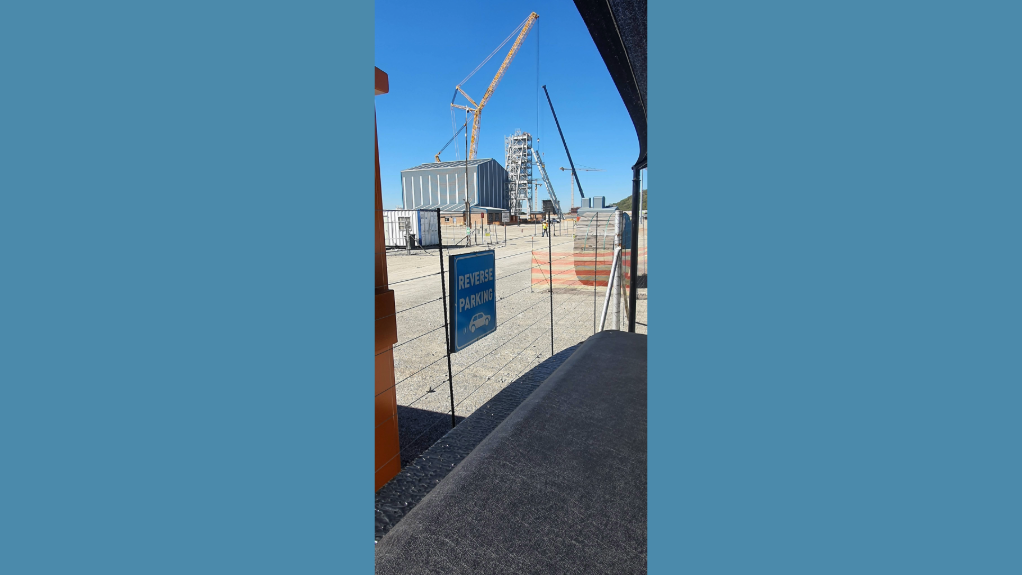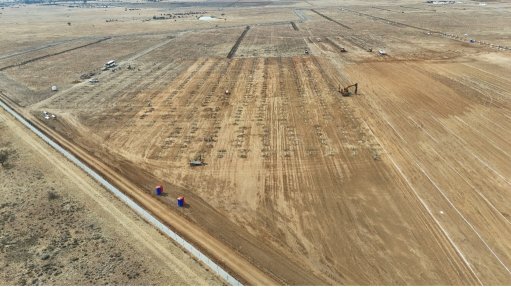Correct installation of components critical


PROJECT INVOLVEMENT Engagement is a critical step in the construction and maintenance of mine shafts
A successful shaft sinking project entails the correct installation of various components timeously, in addition to experienced personnel working on the project from the outset and maximising the time spent at shaft bottom, says fastener supplier Swagefast sales manager Neil Koen.
The company’s involvement in projects such as the K4 Shaft at diversified miner Ivanhoe Mines’ Platreef platinum group metals and nickel mine, in Limpopo, underscores the importance of specialised suppliers in ensuring the integrity and success of complex engineering projects, such as shaft sinking, he adds.
Swagefast is a member of South African Capital Equipment Export Council’s South African Shaft Sinking, Equipment and Services supply group.
“Swagefast gets involved in the intricate process of shaft sinking once civil or structural engineers make contact, seeking expertise on the determination of fastener types, fastener sizing, installation specifications and tool access considerations . . .”, explains Koen.
This engagement, he adds, is a critical step in the construction and maintenance of mine shafts, considering that shaft sinking is an essential activity in mining and civil engineering projects, as it provides the primary means of accessing underground orebodies during the development of an underground mine.
The terminology used to describe shaft sinking is based on the starting point of the excavation. When excavation starts at the surface, it is referred to as a “shaft”; however, if the excavation starts underground, it is known as a “winze” or a “subshaft”.
Additionally, small shafts may be excavated upwards from within an existing mine, assuming there is access at the bottom, and these are called “raises”.
The methods differ significantly between shallow shafts, typically sunk for civil engineering projects, and deep mine shafts, usually sunk using conventional drill-and-blast methods or mechanised means. Deep mine shafts can either be developed vertically or at an incline, although Koen says most modern mine shafts are vertical for efficiency and safety reasons.
If access is available at the bottom of the proposed shaft and ground conditions permit, raiseboring may be used to excavate the shaft from the bottom up, resulting in what is known as borehole shafts.
“The design of mine shafts, including their shape, dimensions and depth, varies greatly to meet the specific needs of the mine and the geological conditions,” says Koen.
For example, in North and South America, smaller shafts are designed to be rectangular, with timber supports, while larger shafts are round and concrete-lined.
Following excavation, shafts are usually lined to ensure safety by preventing loose or unstable rock resistance, and to ensure adequate airflow for ventilation.
“Mine shafts are used for various purposes, including the movement of people, materials, auxiliary services, air ventilation and the extraction of ore or waste. They also serve as vital escape routes in case of underground emergencies,” he explains.
Previous mining accidents resulted in local regulations now requiring that all underground mines have a second means of access, often resulting in shafts being constructed in pairs.
Leading shaft sinking contractors are mainly based in Canada, Germany, China and South Africa.
“Shaft sinking is recognised as one of the most challenging and hazardous tasks in mining, with workers and contractors facing numerous obstacles such as restricted space, gravity, groundwater and soil composition,” he concludes.
Comments
Press Office
Announcements
What's On
Subscribe to improve your user experience...
Option 1 (equivalent of R125 a month):
Receive a weekly copy of Creamer Media's Engineering News & Mining Weekly magazine
(print copy for those in South Africa and e-magazine for those outside of South Africa)
Receive daily email newsletters
Access to full search results
Access archive of magazine back copies
Access to Projects in Progress
Access to ONE Research Report of your choice in PDF format
Option 2 (equivalent of R375 a month):
All benefits from Option 1
PLUS
Access to Creamer Media's Research Channel Africa for ALL Research Reports, in PDF format, on various industrial and mining sectors
including Electricity; Water; Energy Transition; Hydrogen; Roads, Rail and Ports; Coal; Gold; Platinum; Battery Metals; etc.
Already a subscriber?
Forgotten your password?
Receive weekly copy of Creamer Media's Engineering News & Mining Weekly magazine (print copy for those in South Africa and e-magazine for those outside of South Africa)
➕
Recieve daily email newsletters
➕
Access to full search results
➕
Access archive of magazine back copies
➕
Access to Projects in Progress
➕
Access to ONE Research Report of your choice in PDF format
RESEARCH CHANNEL AFRICA
R4500 (equivalent of R375 a month)
SUBSCRIBEAll benefits from Option 1
➕
Access to Creamer Media's Research Channel Africa for ALL Research Reports on various industrial and mining sectors, in PDF format, including on:
Electricity
➕
Water
➕
Energy Transition
➕
Hydrogen
➕
Roads, Rail and Ports
➕
Coal
➕
Gold
➕
Platinum
➕
Battery Metals
➕
etc.
Receive all benefits from Option 1 or Option 2 delivered to numerous people at your company
➕
Multiple User names and Passwords for simultaneous log-ins
➕
Intranet integration access to all in your organisation


















